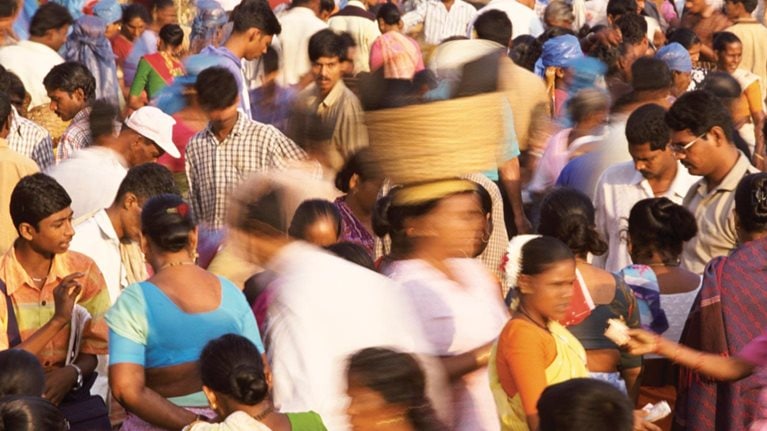As India gears up for its general election next month, it has some cause to celebrate: extreme poverty is finally in retreat. In 2012 – two decades after the government launched a series of economic reforms aimed at opening up the economy – the official poverty rate had reached 22%, less than half the rate in 1994. But it is time for India to raise its aspirations. Escaping abject destitution, though an important milestone, is not the same as achieving a decent standard of living and sense of economic security. To that end, there is still much to be done.
Indeed, the extent of the task is reflected in a new McKinsey Global Institute report, “From Poverty to Empowerment,” which uses an innovative analytical framework, the “empowerment line,” to estimate the cost to the average citizen of fulfilling eight basic needs: food, energy, housing, potable water, sanitation, health care, education, and social security. According to this metric, 56% of Indians in 2012 “lacked the means to meet essential needs.”
Remarkably, this number is more than 2.5 times larger than the number of people still living below the poverty line in India. Even more striking is that the “empowerment gap” – that is, the additional consumption required to bring these 680 million people to the empowerment line – is seven times larger than the cost of eliminating extreme poverty.
Furthermore, while the empowerment line is a measure of individual consumption, a household’s ability or willingness to spend is not sufficient to guarantee a decent life. People also need access to community-level infrastructure like health clinics, schools, power grids, and sanitation systems. But the average Indian household lacks access to 46% of basic services, with the severity of the gaps varying widely across districts.
What can India’s government do to provide its citizens with the dignity, comfort, and security that they deserve? Given that roughly half of current public spending on social programs fails to deliver better outcomes for the poor, simply directing more funds through existing channels is unlikely to have much of an impact.
Instead, policymakers should focus on supporting employment and productivity gains – historically the most potent weapons against poverty. Of course, this will not be easy. India’s economy has slowed in recent years. If economic growth remains on its current trajectory, with no major reforms, more than one-third of the population will remain below the empowerment line in 2022, with 12% still trapped in extreme poverty.
To avoid such an outcome, India’s government should pursue a set of bold reforms that boost growth by encouraging businesses to invest, scale up, and hire. The reform agenda should be based on four key priorities:
- The addition of 115 million non-agricultural jobs over the next decade to absorb the growing pool of workers and accelerate the shift toward more modern industries.
- A doubling of agricultural productivity growth, in order to raise India’s farm yields to the levels achieved in other emerging Asian countries.
- A doubling of real (inflation-adjusted) public spending on social services over ten years, with much of the increase allocated to fill gaps in health care, the provision of clean drinking water, and sanitation.
- An overhaul of social-service delivery.
With the right set of measures, more than half a billion people could cross the threshold of consumption required for an economically empowered life, and Indians could gain access to more than 80% of the basic services they need by 2022. Jobs and productivity growth could contribute 75% of the potential gains, while increased public spending alone, without measures to improve its effectiveness, would contribute less than 10%.
To realize this potential, policymakers should eliminate arcane regulations that handcuff businesses; accelerate infrastructure projects; make the labor market more flexible; remove market distortions; and expand vocational training for the poor and uneducated. At the same time, they should work to place the efficiency of all public spending on par with that in India’s best-performing states.
All of this demands a strong commitment to better governance and a relentless focus on outcomes. Common-sense strategies – such as improving coordination among the plethora of ministries and departments that comprise the bureaucracy, and establishing accountable and empowered agencies to deliver results in high-priority areas – could go a long way toward meeting this demand. Moreover, technology could be used to streamline government services and render them more transparent. Finally, closer engagement with private- and social-sector actors and local communities could help to increase efficiency, while reducing the burden on the public sector.
India’s young and dynamic population is demanding a better quality of life. With strong and sustained political will and results-oriented policies, India’s government can deliver it.
This article originally ran in Project Syndicate.


